Safe Driving Tips
Bad weather – Safety tips for drivers

Lilian Monday, August 1, 2022
Rain
 Rain makes it harder to slow down and brake properly, also reduce you visibility and vehicle control. Think ahead and plan with safety in mind it may save your life.
Rain makes it harder to slow down and brake properly, also reduce you visibility and vehicle control. Think ahead and plan with safety in mind it may save your life.
- Be sure that your headlights, turn signals, tail lights and brake lights are working. Headlights will make your truck more noticeable to other drivers.
- Check your windshield wipers to see if they need replacing and check your tires to be sure they are in good condition.
- Defog your windows to make sure that you have a good visibility, use AC if needed.
- Aim for a “lighter foot” when it comes to braking and accelerating.
- Keep a safe distance and leave more space - It is harder to stop in the rain, as the risks of sliding are increased.
- Reduce your speed -During the first few hours of a rainstorm, accumulated oil and grease are lifted off the road, creating a slick surface until the oil is washed away. Slowing down increases your traction since more of your tire tread will be touching the pavement.
- Avoid hydroplaning.
- Turn off your cruise control - Cruise control takes a second or two to disengage and allow you to take control when you need to, those few seconds can be crucial.
- Stay out of puddles - You might be tempted to enjoy the big splash as you plow through a puddle but can be deeper than you anticipate, which can cause damage to your vehicle.
- Drive defensively - Stay alert and focused at all times, use additional caution when merging or changing lanes.
Fog
 Foggy weather drastically impairs the driver’s ability to see the road ahead, thus diminishing the amount of time they have to respond to other drivers or possible dangers. Fog is the most hazardous weather condition, making it difficult to judge speed, as well as judge the distances of cars in front or behind you.
Foggy weather drastically impairs the driver’s ability to see the road ahead, thus diminishing the amount of time they have to respond to other drivers or possible dangers. Fog is the most hazardous weather condition, making it difficult to judge speed, as well as judge the distances of cars in front or behind you.
- Use your low beam headlights, fog lights.
- Be aware and drive at reduced speed.
- Use your four-way flashers - Turning on your four-way flashers, or emergency warning lights, can help increase your truck’s visibility to other drivers and prevent an accident.
- Avoid changing lanes and passing other vehicles.
- Don't drive in heavy fog - is just not worth the risk, find a safe parking spot and wait.
Wind
 Wind is the unseen weather, you can’t see it like you can snow and rain but it can be just as dangerous if you aren’t prepared. Wind speeds that are near 60 mph is enough to overturn a trailer. A large trailer is especially dangerous because it has a lot of surface area that is a recipe for disaster in the wind. An empty trailer is at a greater risk in high winds than a trailer that is carrying a 30,000 lbs load. Flatbed drivers are at an advantage because they don’t have a trailer (high surface area) that catches the winds and tips them over.
Wind is the unseen weather, you can’t see it like you can snow and rain but it can be just as dangerous if you aren’t prepared. Wind speeds that are near 60 mph is enough to overturn a trailer. A large trailer is especially dangerous because it has a lot of surface area that is a recipe for disaster in the wind. An empty trailer is at a greater risk in high winds than a trailer that is carrying a 30,000 lbs load. Flatbed drivers are at an advantage because they don’t have a trailer (high surface area) that catches the winds and tips them over.
- Slow down.
- Secure doors and the load.
- Keep a tight grip.
- Drive in the lowest gears.
- Don't drive in heavy wind- find a safe parking spot and wait.
- All minimum trailer weights are in addition to empty trailer weight.
- Wind direction should be considered when using this chart. Winds hitting you at 90° or 180° will have a greater effect than those directly from the front or rear.
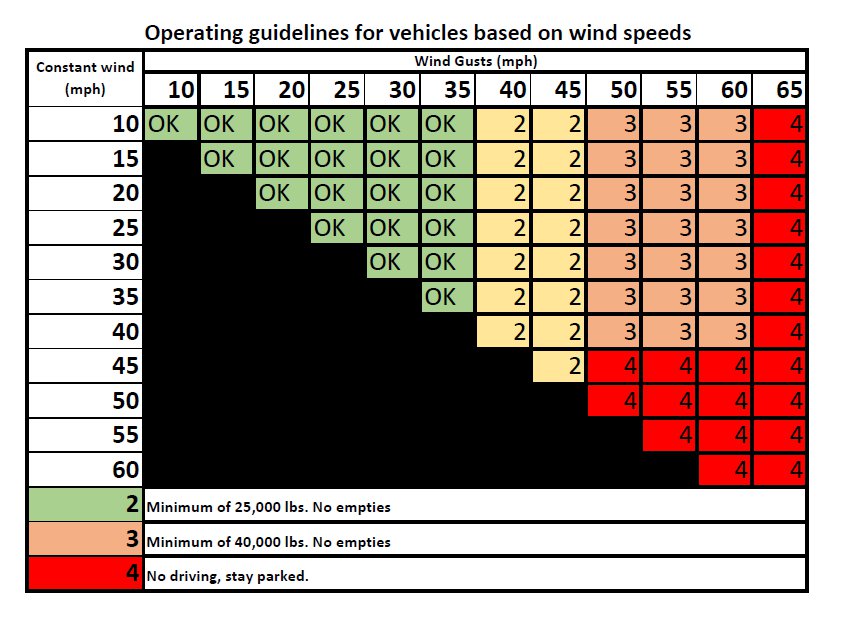
High Heat
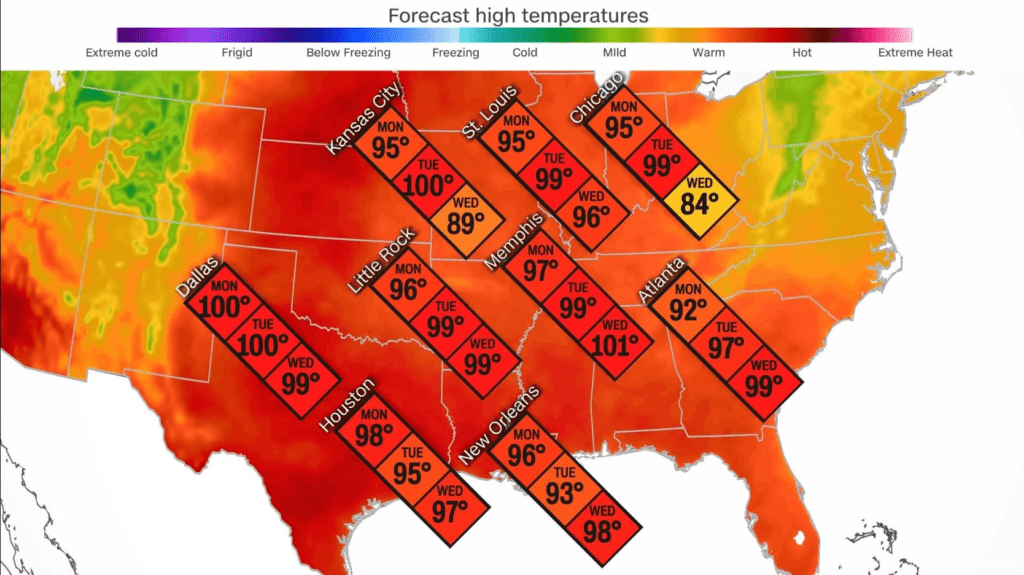 Excess heat can be a danger too. High temperatures are hard on a big rig and its optimum operation. It can literally melt the rubber from the tires! The truck engine will tend to overheat and the fan clutch works over-time. If a driver pushes the truck hard in excess heat conditions, the engine temperature can skyrocket, which can do serious motor damage. If it’s going to be a seriously hot day, it may be best to park during the hottest part of the day. Then, in the evening when the temperatures have cooled, proceed on your trip.
When temperatures get too hot, brakes can fade, or the components can reach a point where no additional heat can be absorbed, causing lost friction. When you apply the brakes, heat is transferred to the brake fluid. If you don’t give the brakes adequate time to cool, the brake fluid can actually boil, causing the brake pedal to reach the floor with no braking power. Check your brakes frequently during a trip in hot weather. If you have a heavy load and have a long descent downhill, consider shifting down a gear or two to take some of the stress off the brakes.
Before a long, hot trip, check your coolant level. A low level could lead to engine overheating which could add more rest time to your trip than wanted. It may also be smart to replace engine oil in the hot weather. Switching to a higher viscosity oil could also help protect your engine during high temperatures.
Hot weather trucking can cause tires to wear out faster. You may experience more flat tires due to air loss, or tire blowouts because heat wears down on the integrity of the tire. To prevent tire troubles and overheating, make sure you have the proper air pressure in tires to help regulate the tires’ temperature.
The sun can be deadly, but it can also cause some unwanted side effects. If you’re traveling for long bouts of time, be sure to wear sunscreen to prevent burns (especially on nice days when their windows are down). Keep plenty of water around to keep you hydrated and to help you stay cool during long trips.
Excess heat can be a danger too. High temperatures are hard on a big rig and its optimum operation. It can literally melt the rubber from the tires! The truck engine will tend to overheat and the fan clutch works over-time. If a driver pushes the truck hard in excess heat conditions, the engine temperature can skyrocket, which can do serious motor damage. If it’s going to be a seriously hot day, it may be best to park during the hottest part of the day. Then, in the evening when the temperatures have cooled, proceed on your trip.
When temperatures get too hot, brakes can fade, or the components can reach a point where no additional heat can be absorbed, causing lost friction. When you apply the brakes, heat is transferred to the brake fluid. If you don’t give the brakes adequate time to cool, the brake fluid can actually boil, causing the brake pedal to reach the floor with no braking power. Check your brakes frequently during a trip in hot weather. If you have a heavy load and have a long descent downhill, consider shifting down a gear or two to take some of the stress off the brakes.
Before a long, hot trip, check your coolant level. A low level could lead to engine overheating which could add more rest time to your trip than wanted. It may also be smart to replace engine oil in the hot weather. Switching to a higher viscosity oil could also help protect your engine during high temperatures.
Hot weather trucking can cause tires to wear out faster. You may experience more flat tires due to air loss, or tire blowouts because heat wears down on the integrity of the tire. To prevent tire troubles and overheating, make sure you have the proper air pressure in tires to help regulate the tires’ temperature.
The sun can be deadly, but it can also cause some unwanted side effects. If you’re traveling for long bouts of time, be sure to wear sunscreen to prevent burns (especially on nice days when their windows are down). Keep plenty of water around to keep you hydrated and to help you stay cool during long trips.
Make Safety Your Priority for All Weather Conditions

Safety is the number one issue no matter what the weather. As a professional truck driver, it is solely your decision whether you proceed or stay parked if the conditions are threatening.
See other news
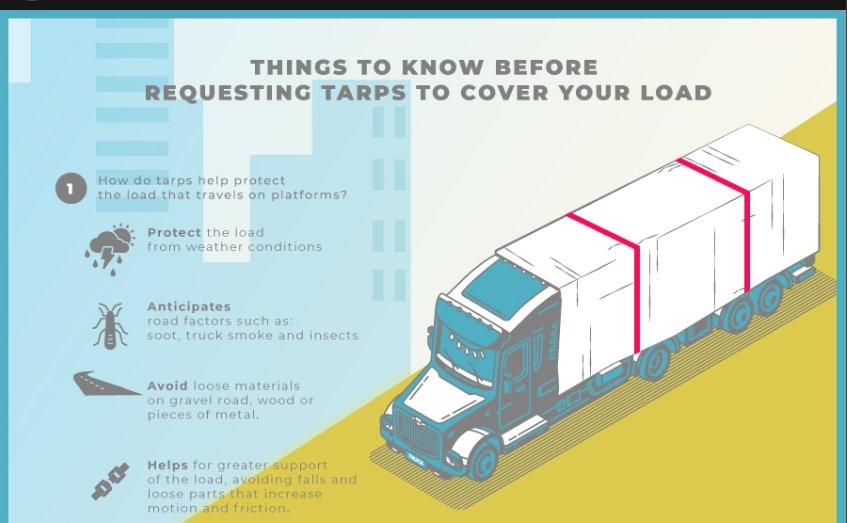
How to Tarp Flatbed Loads
👉 Tarping a load is crucial to protect both the cargo and the tarp itself. The primary reasons for tarping are to...
Read MoreProtected: Training Materials for Flatbed
There is no excerpt because this is a protected post.
Read More
How To Secure Pallet Racks
On the picture below you can see a great example how the pallet racks should be placed on the flatbed trailer...
Read MoreHow to find JGG Office
The location of the office – 800 Roosevelt Rd, Bldg A , Ste 12, Glen Ellyn, IL If you enter from south...
Read More
Photo Contest
TAKE PICTURES and VIDEOS OF YOUR TRUCK and GET THE CHANCE TO WIN A PRIZE. ✅ Just take the picture or video...
Read More
Driver Journey in joining John Galt Group Team
Read More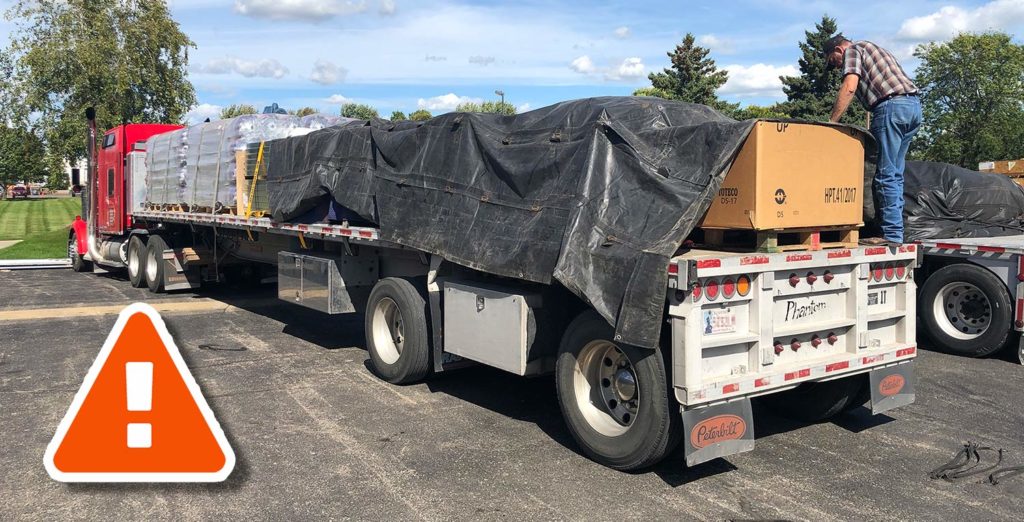
Secure and Protect: A Guide to Tarping Loads on Flatbed Trailers
Transporting goods on a flatbed trailer is an efficient and cost-effective way to move large or bulky loads across...
Read More
Bad weather – Safety tips for drivers
Being a truck driver comes with a lot of responsibilities, including the safety of yourself and others around you....
Read More
Load Securement Base
Here you can find information about flatbed load securement for different type of freight. Knowledge you need to...
Read More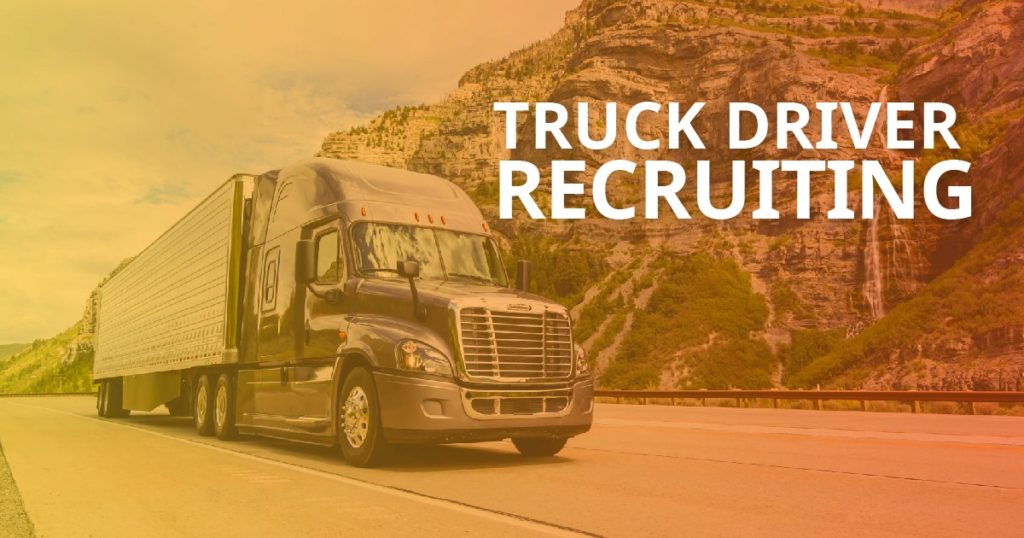
John Galt Group is looking for an Experienced Recruiter
✅ We are looking for and experienced recruiter, that has hands on experience and knows what he/she is doing in...
Read More
Legal Limits In Each State
Legal Limits In Each State To choose State, which are you looking for, hit the button “Filter” and...
Read More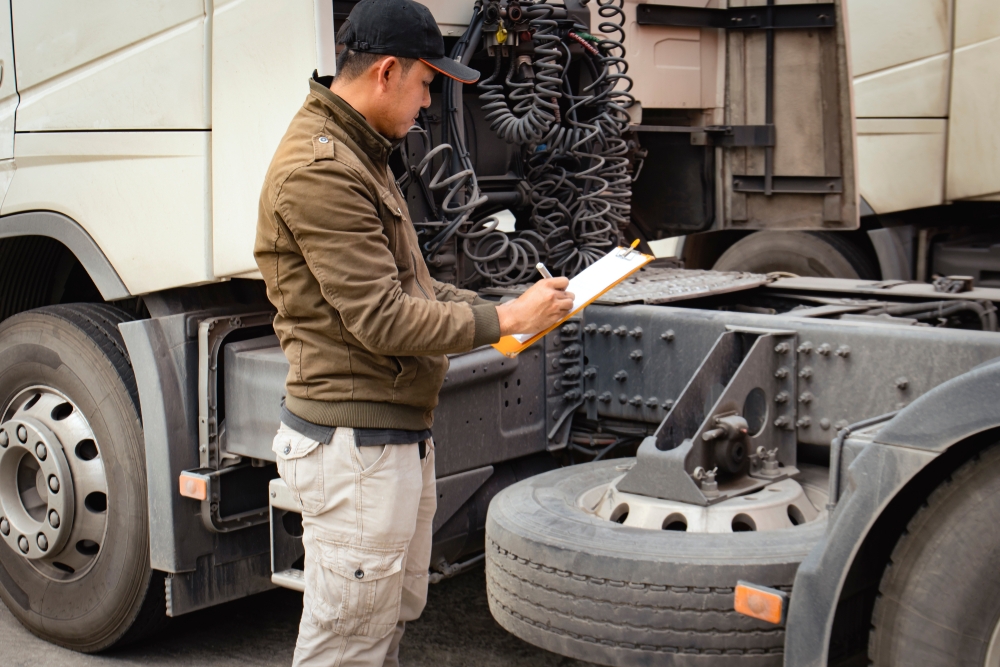
Pre- and POST-TRIP INSPECTIONS
Pre- and POST-TRIP INSPECTIONS Minimizing the road breakdowns and preventing out-of-service violations are two of...
Read More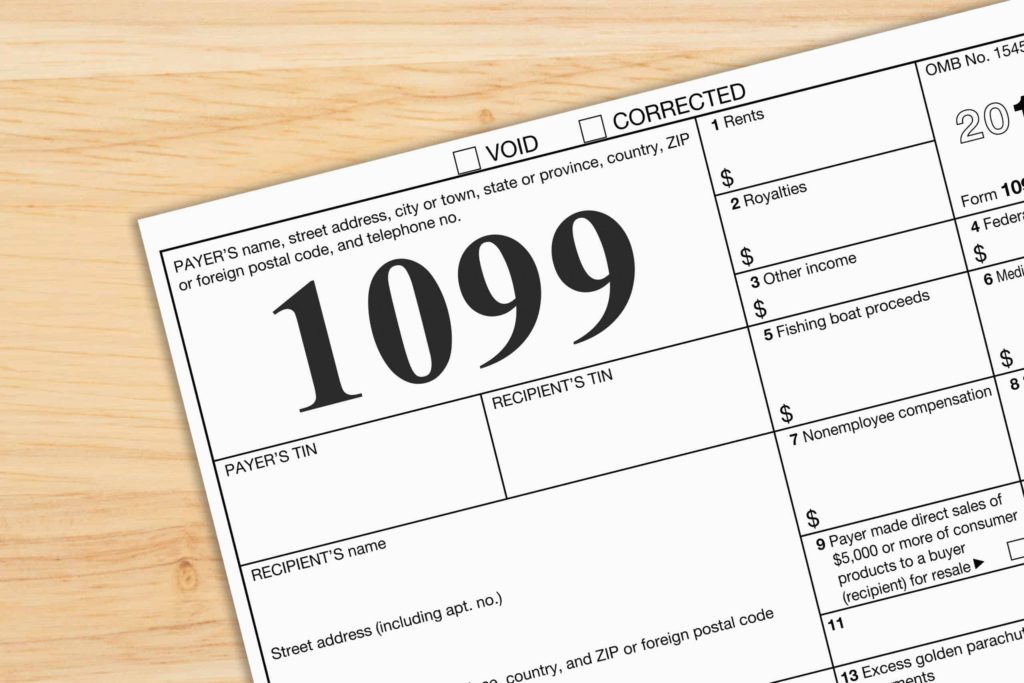
1099 form – what numbers get in the form
1099 form – what numbers get in the form 1099 form 🔙Blog Page
Read More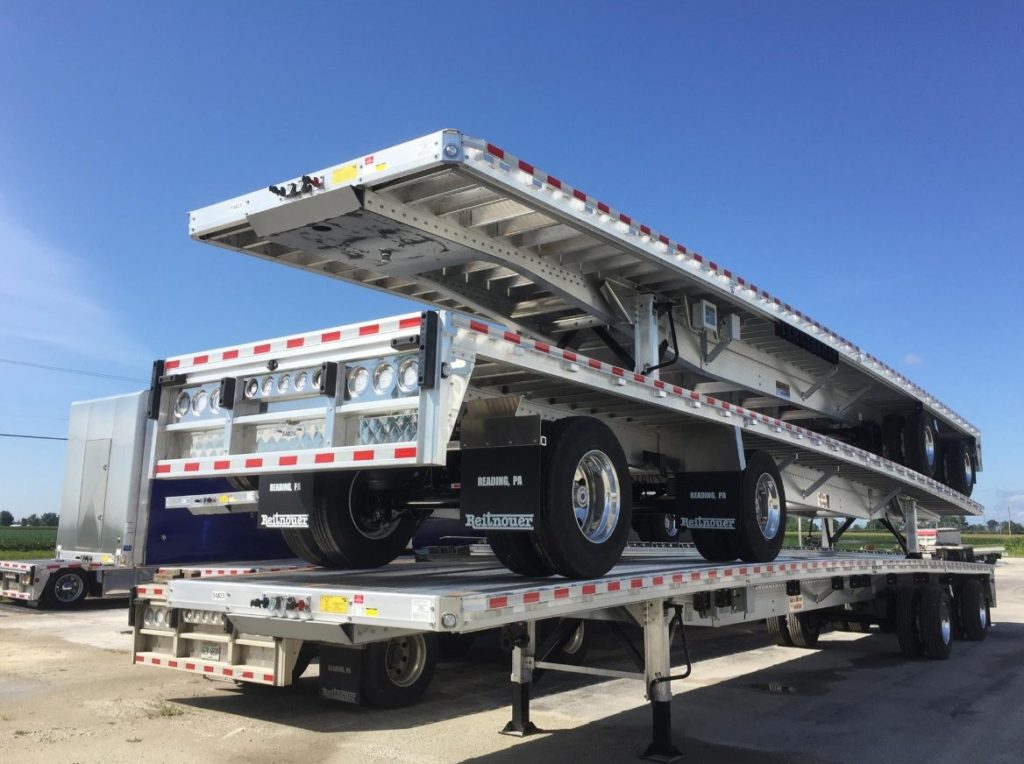
How To Secure Flatbed Trailer Stack
Flatbed Trailer Stack Use chains to secure all empty trailers to the bottom trailer. The chain in the front MUST be...
Read More
Paper Roll
Paper Roll Securement With Eye Vertical Requirements for placement paper roll: Place paper rolls together in a...
Read More
How To Secure Structural Steel
How To Secure Structural Steel Structural Steel is inherently a difficult load to secure. Different shapes and...
Read More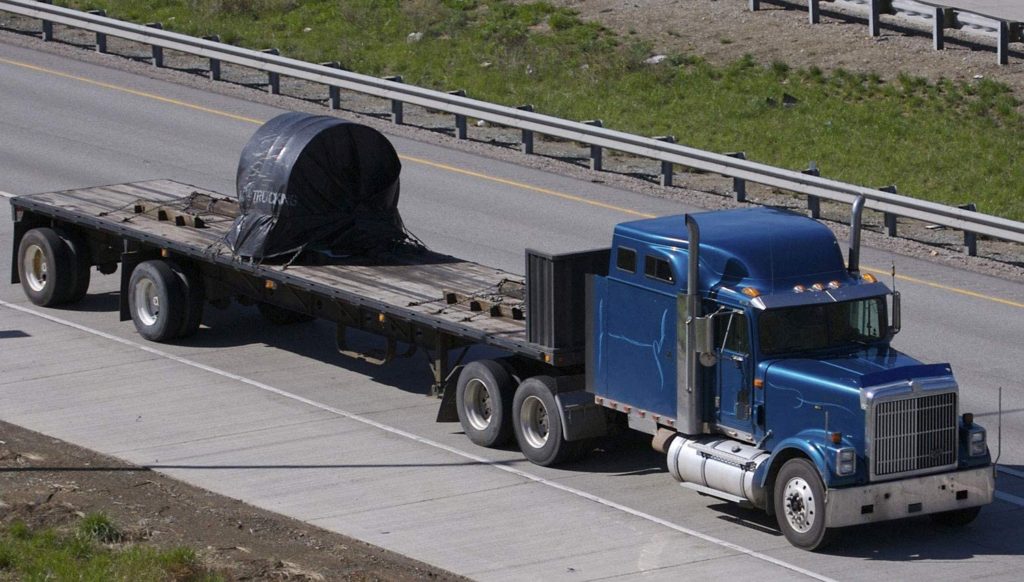
How To Secure Palletized Coil
Palletized Coils Palletized coil: We will use Coil racks to keep the steel coil from rolling and support the...
Read More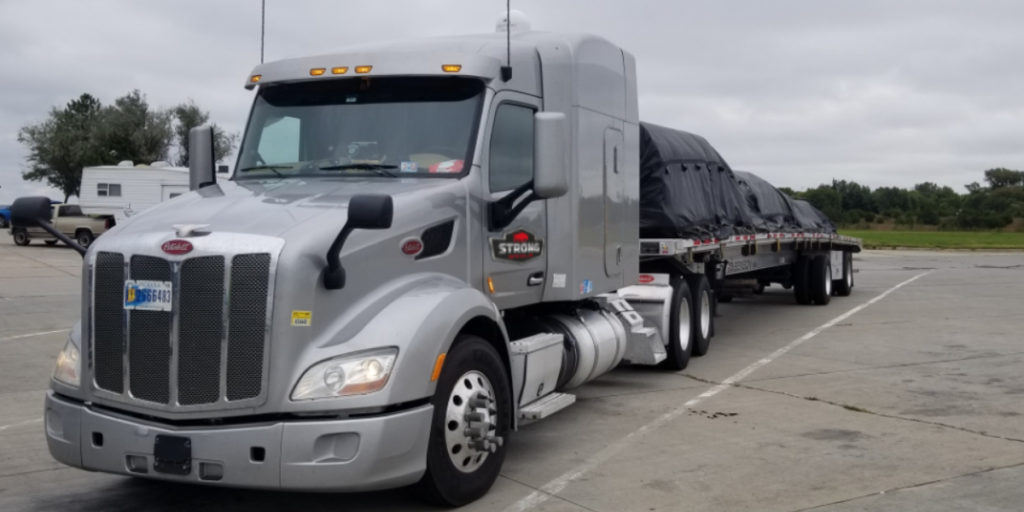
Secure A Load of Windows or any box lumber framed
Windows securement: 1 Crates on the left in the picture contain the glass for all this frames, so they are the most...
Read More
How To Secure Lumber
These rules apply to bundles of dressed lumber, packaged lumber, building products such as plywood, wallboard or...
Read More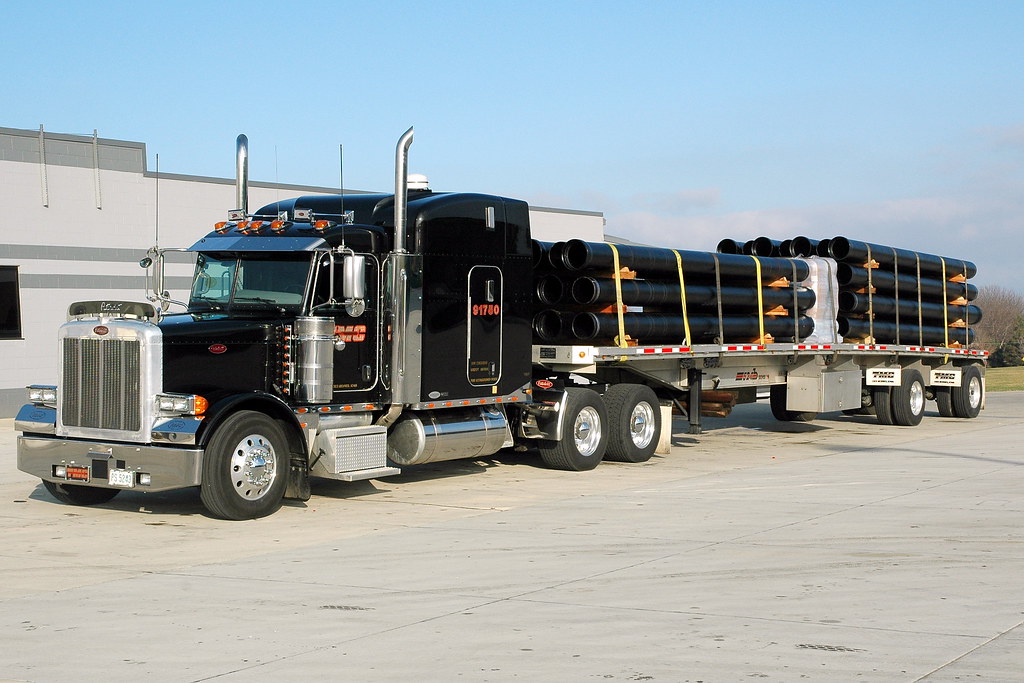
How To Secure Pipe Load
Pipe Securement. Make sure that concrete pipe doesn’t roll or slide: Load pipe as compactly as possible...
Read More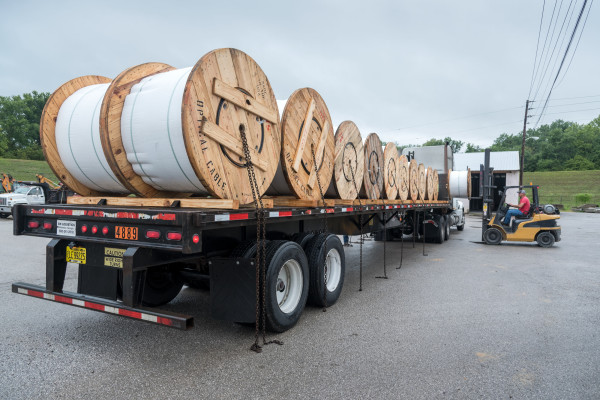
How To Secure Spools of Cable and Wire Bundles
Spools of Cable and Wire Bundles How To Secure? Spools of Cable To tie down spools you will need dunnage, chains,...
Read More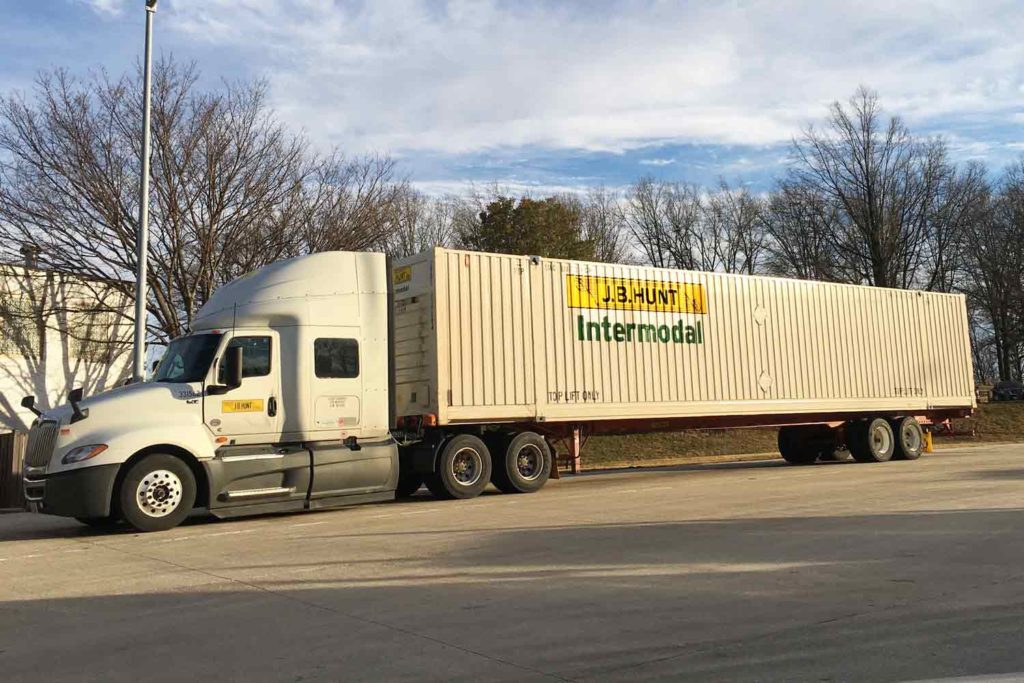
How To Secure Containers On Flatbed
How To Secure Containers On Flatbed Position of the container Container securement: All lower corners of the...
Read More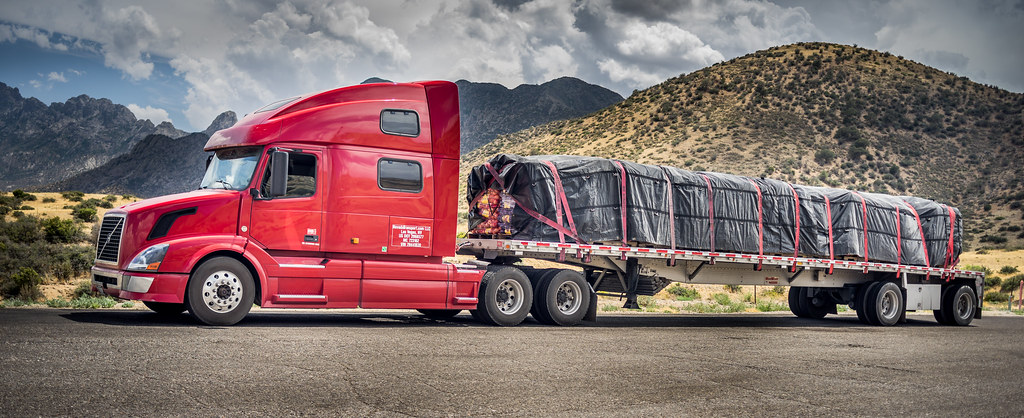
How To Secure Onion Loads
How To Secure Onion Loads Instruction for driver, onion loads: General Tips Best is to have at least half tank or...
Read More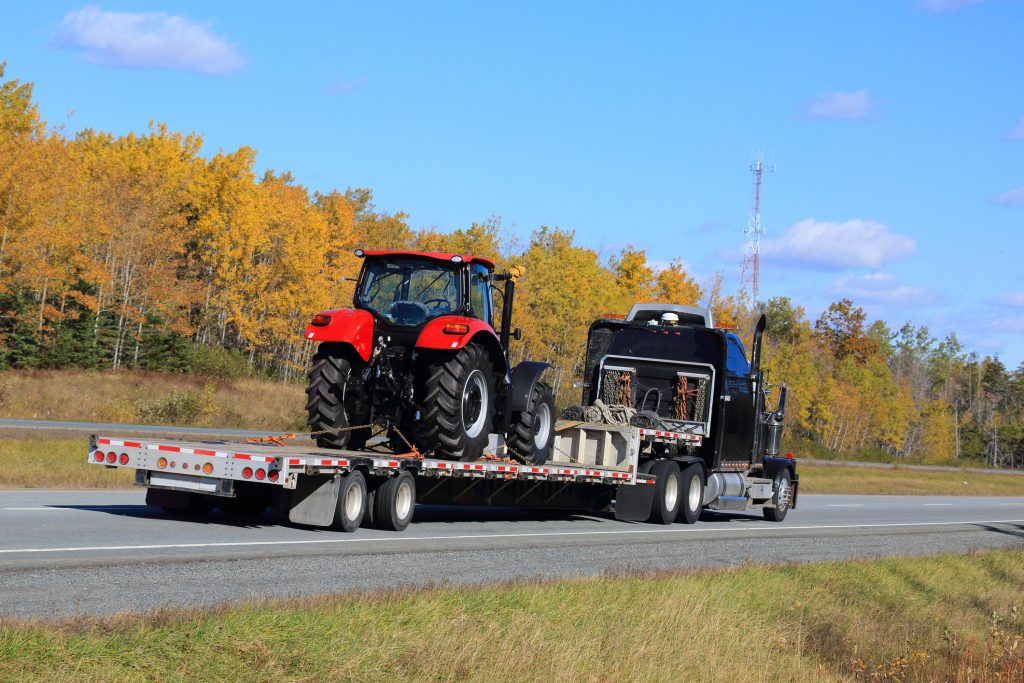
How To Secure Tractor
How To Secure Tractor: According to the FMCSA, vehicles with wheels or tracks that weigh 10,000 Lbs. or more are...
Read More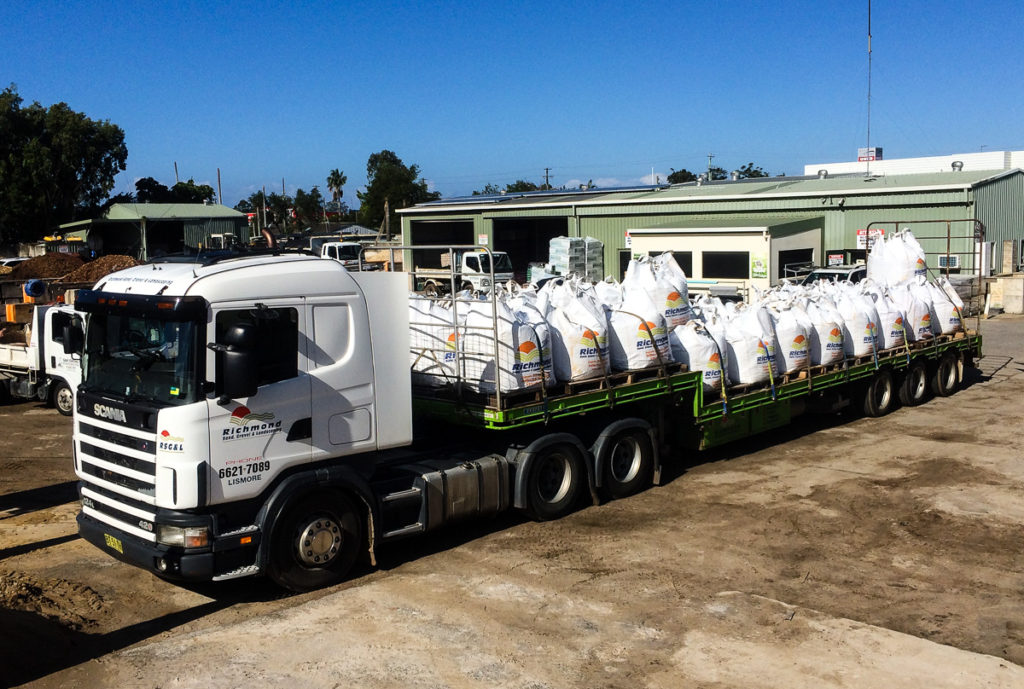
How To Secure Bags
All about bags securement Bags securement: You can use a combination of items to secure the cargo on your flatbed...
Read More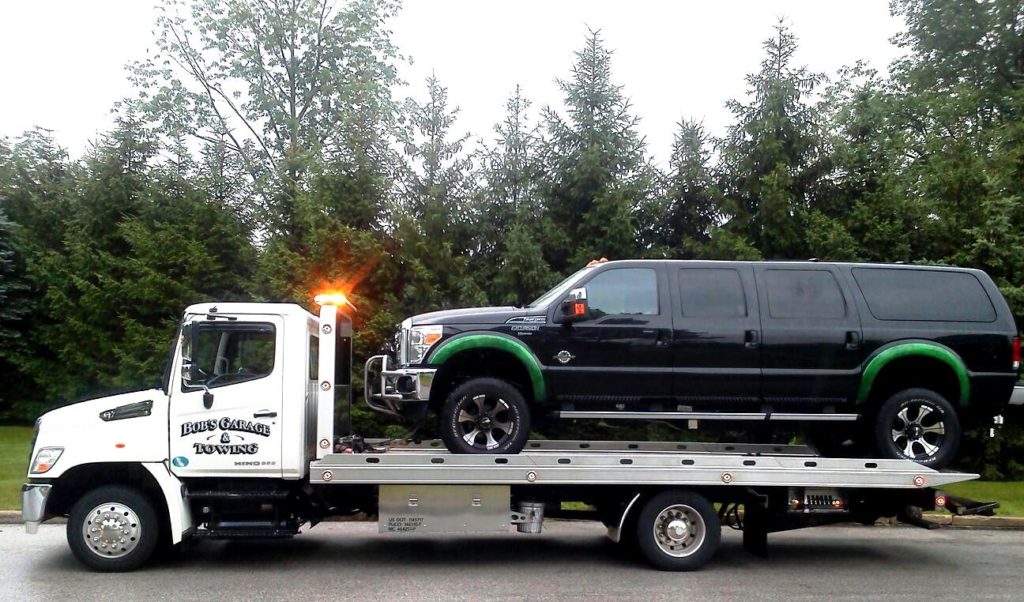
How To Secure Machinery Loads
Machinery Loads: The requirements in this section apply to the transportation of automobiles, light trucks, and...
Read More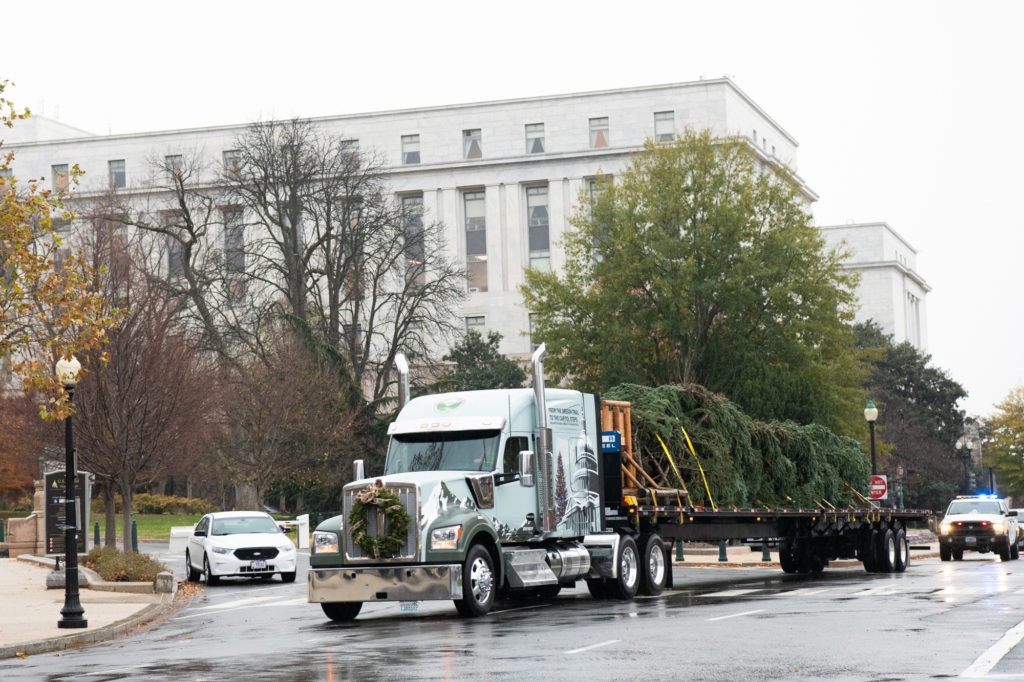
How To Secure Trees On Flatbed?
Use a breathable tarp system Secure Trees: Transporting trees can be tricky because they need to be covered with a...
Read More
Medi-Share – healthcare sharing ministry
Medi-Share – healthcare sharing ministry: Medi-share is an or organized way in which Christians share their...
Read More
OO Equipment Rental, Sale and Purchase ADs and Requests
Equipment Rental If you have any requests or have any equipment for rent or sale, please fill this Form. ...
Read More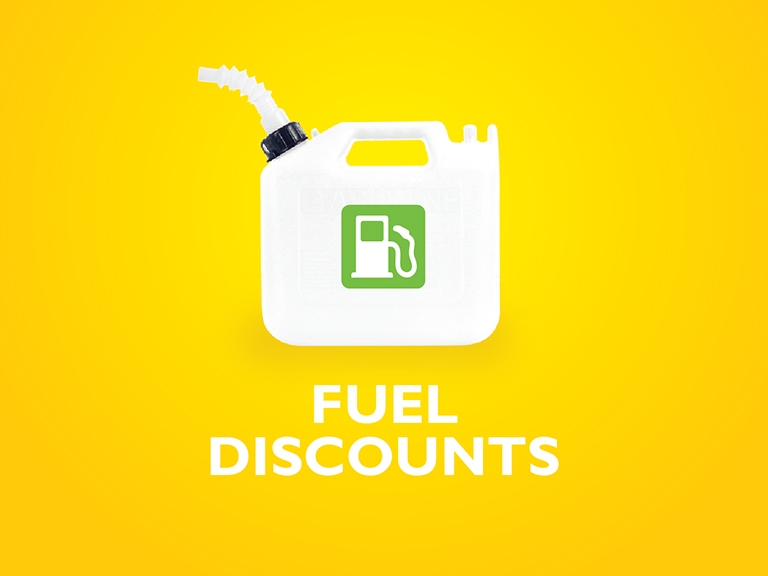
Benefits of Company Fuel Card vs NASTC and other cards
Company fuel Card vs NASTC and other cards: Benefits of Company Fuel Card vs NASTC and other cards 🔙Blog Page...
Read More
Driver Workflow at John Galt Group
Driver Workflow at John Galt Group Morning Routine Driver Workflow: After you wake up do your morning routine. It...
Read More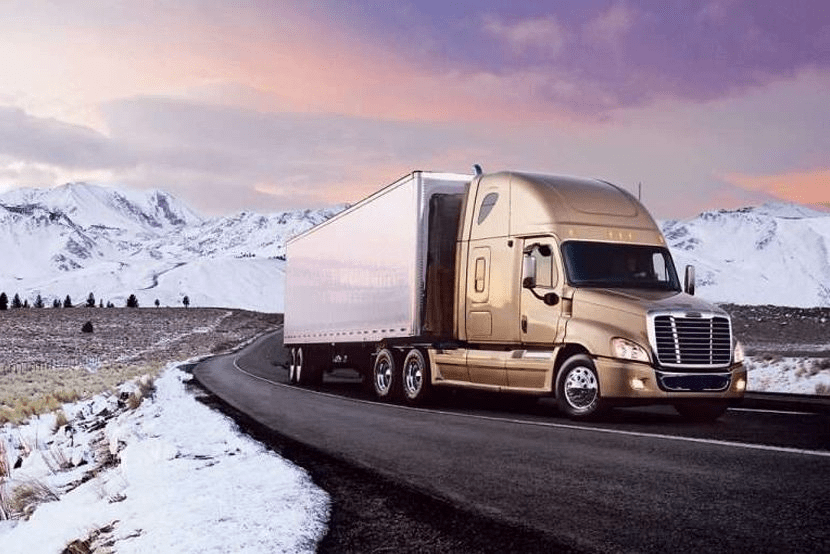
A few tips for upcoming winter season
Winter season Winter season: In this article, we want to share with you some good to know tips before winter is...
Read More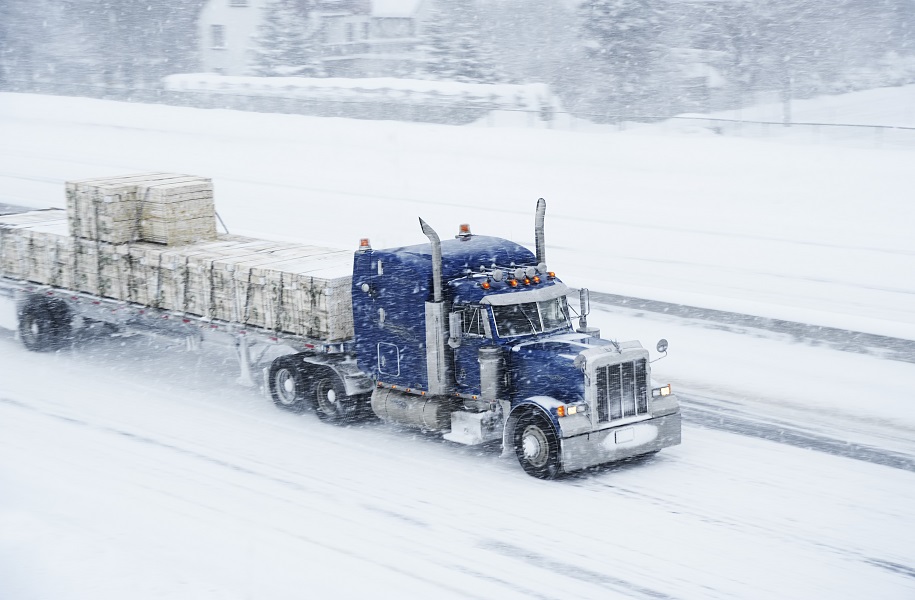
Everything You Need to Know About Chain Laws
Everything You Need to Know About Chain Laws States with No Tire Chain Laws Some states have no tire chain laws at...
Read More